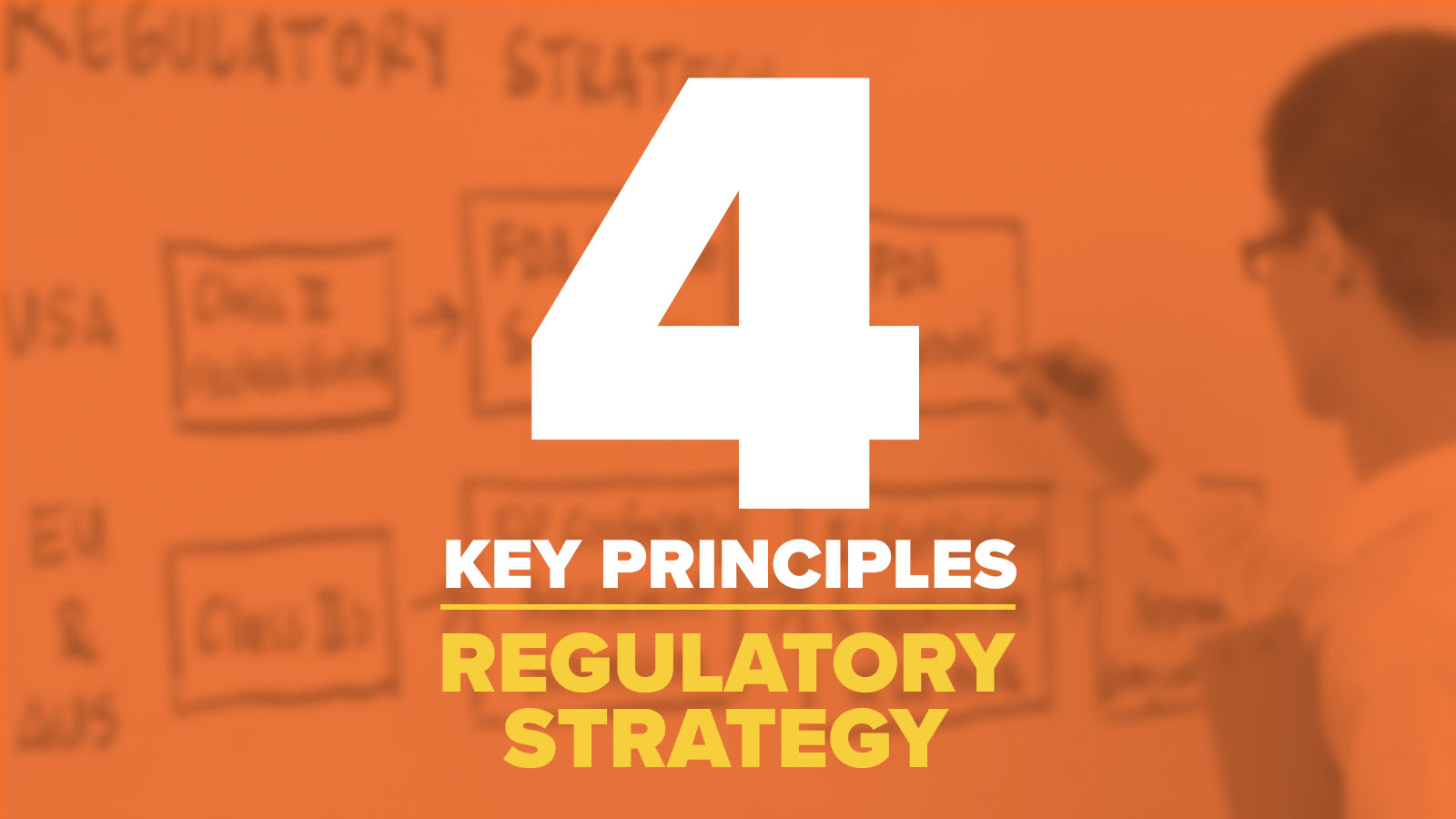
When it comes to commercializing medical devices and products, having a regulatory strategy in place is more than just a tick-box exercise focused on compliance.
Developing a regulatory strategy early in the process enables companies to streamline product development, regulatory approval, and market entry; by identifying the best regulatory path to market and ensuring that marketing claims, product design, verification and validation activities are aligned.
Additionally, it adds strategic value by mitigating risk, informing, and smoothing commercialization, and giving you viable back-up options if your ‘Plan A’ fails.
At PI, we have helped many of our clients, from start-ups to multinationals, navigate the complex regulatory process involving many of the world’s leading regulatory bodies across various jurisdictions. Here is a short summary of some learnings and four key principles that we follow when developing a regulatory strategy that will serve you now and into the future.
Start early
Many companies may not realize the invaluable insights that can be gained from embedding a regulatory strategy early in the product development journey and how these insights translate to downstream success.
These early insights can be used to inform the design and architecture of your device, which can reduce regulatory burden and decrease time and cost to market.
For example, the functionality of your patient app can determine whether it is regulated or unregulated. You may be able to move some of the functionality (out of your app) into another part of the system to reduce regulatory burden and provide flexibility to make greater changes in future.
Secondly, how you define the intended purpose, end user and target patient population can significantly change the regulatory burden and level of clinical evidence required.
Early awareness and sensitivity towards the regulatory landscape (which is dynamic and nuanced) helps to identify crucial tradeoffs and to resolve commercial complexity and uncertainty, such as when the Voice of Customer feedback indicates that a particular function is highly desired but may have future significant impact on the regulatory pathway.
When a regulatory strategy is prepared late, insights, which can help drive agility, iteration and value, remain undiscovered or difficult to retroactively capture and implement. Further re-design can be prohibitively expensive. Additionally, being able to anticipate and prepare for potential regulatory hurdles is a key benefit of early engagement with the regulatory requirements to avoid costly compliance failures.
Avoid preparing a strategy in isolation
Always consider regulatory insights in the context of your overall commercial strategy. Regulatory strategies are often prepared in isolation with just a single option, or path forward without consideration of the wider commercial context.
Let’s use the example of COVID-19 rapid antigen tests. From a regulatory perspective, Europe appeared to be the most desirable market with the easiest pathway – the tests were ‘self-certified’ general IVDs, as opposed to other markets where they were classified as Class 2 or 3, requiring significantly greater regulatory oversight.
However, when you overlay market and reimbursement insights to this approach, Europe may not represent the best target market. An easy regulatory path sometime correlates with a flooded market, full of competition and the pricing of your product may not be feasible for your business.
Had the regulatory strategy been considered as part of a broader commercial strategy, these concerns would have been identified early on and alternate commercial decisions could have been made.
Think broader than your initial target market
We know that the United States accounts for approximately 55 per cent of the global diagnostics market. Therefore, it’s easy to focus solely on this market without considering potential alternate markets as a back-up.
Start-ups are under pressure to demonstrate early viability and often feel they do not have the resources to consider additional markets. Yet paradoxically, the long-term sustainability of such start-ups requires that they correctly identify alternative and broader markets. So how do you balance the challenges of a small budget while mitigating regulatory risk?
Build a smart strategy – not a big one. Early awareness does not cost too much; and simply being aware of the requirements in other regions does not necessarily mean you will have to implement them.
It is prohibitively expensive for a start-up to repeat a clinical trial, so being aware of the clinical data requirements in different regions from the start may reduce risk and provide an opportunity to enter new markets in future. Conversely, analytical or bench testing may be easier to repeat so if there are regional differences you may not choose to address these all up-front.
Back to our COVID-19 example: RAT manufacturers focused on the US market-collected clinical data over a period of five days post-symptom onset, as this is what the US FDA requires. However, Europe and Australia both required clinical data to be collected up to seven days post-symptom onset. At the time, it would not be too great an effort to ensure patients are recruited on days six or seven. If this data is not collected at the time, it may not be an option to repeat the trial later, preventing access to some markets.
Don’t set and forget!
One of the most common mistakes we see is that companies ‘tick the box’ with completing a regulatory strategy and then do not revisit it – sometimes for years!
Regulations are constantly changing as is the market in which companies are trying to enter. A regulatory strategy requires continuous revisiting and review, to ensure that it is still applicable at the time of commercialization.
The below table outlines two examples of changes in the IVD field that took place between January 2022 and May 2022:
| Date of notice | Change | Impact |
| January 2022 | The transitional provisions for certain IVD devices under EU IVDR 2017/746 were extended (Regulation 2022/112) | Ability to take advantage of longer transitional timelines to comply with EU IVDR, provided a declaration of conformity was drawn up by 26 May 2022.
This is an example of the importance of being aware of changes and key dates as they could impact cost and time to market substantially. |
| May 2022 | The TGA extended their acceptance of ISO 13485 certificates from May 2022 to May 2023 | This extension may provide an opportunity for IVD manufacturers to enter the Australian market prior to the transition deadline. After the 26 May 2023, IVD manufacturers will not be able to use ISO 13485 certification to support an application for ARTG entry.(except in cases where they hold an EU declaration of conformity under Directive 98/79/EC prior to 26 May 2022).
The Regulatory Strategy should be reviewed, and new opportunities or risks highlighted as a result of this change. |
These changes may not necessarily apply to your specific product; but the point is to show how much can change in a short amount of time. If your regulatory strategy was not reviewed during this time, then it’s possible to miss a deadline or opportunity that could significantly change your time or impact the smoothness of your path to market.
At PI, we work with clients wherever they are on their product development journey to ensure that they feel confident with their regulatory strategy and maximize the strategic value from this process rather than “ticking-a-box”.
If you require assistance with your regulatory strategy or your broader commercialization strategy, please reach out and always remember, it’s about building a smart strategy – not a big one.








